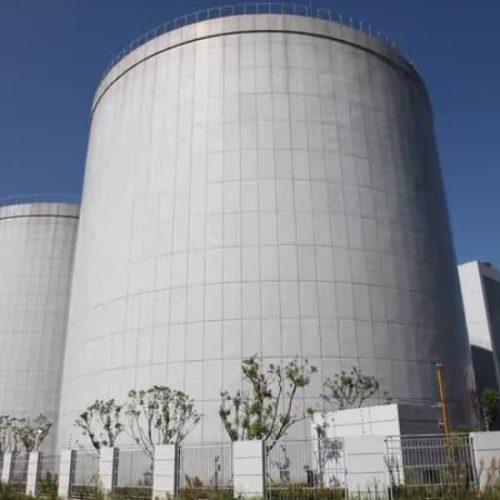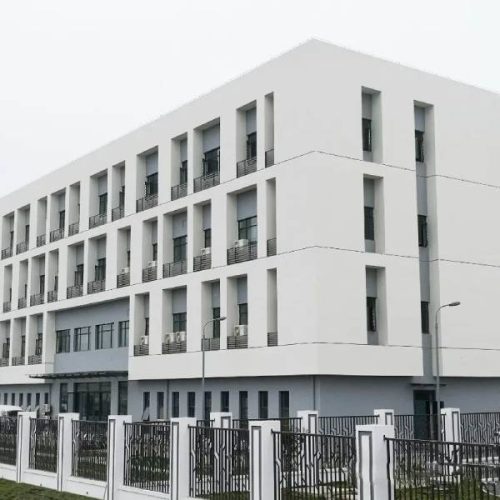At present, Polyaspartic elastomer materials are being applied in an increasingly wide range of fields — from major national projects such as the Beijing–Shanghai High-Speed Railway, Olympic venues, and the World Expo pavilions, to everyday uses such as pipeline linings, basketball court flooring, and tile grouting. In recent years, to better utilize the advantages of polyurea coatings, researchers have combined them with other materials such as high-performance fibers and fabrics to prepare advanced composites that meet diverse application needs.
Waterproof and Anti-Corrosion Polyaspartic Coatings
After curing, Polyaspartic waterproof coatings form films with good elongation and weather resistance, without foaming, making them suitable for hydraulic engineering and large water storage facilities. In addition to excellent waterproofing, Polyaspartic coatings also have outstanding corrosion and UV resistance and are widely used on the surfaces of bridges and livestock farm structures, significantly extending their service life.
For applications such as water parks, two-component Polyaspartic coatings with high strength, flexibility, corrosion resistance, and waterproofing have been developed. When sprayed and cured on water park surfaces, they form durable, corrosion-resistant, and flexible films that meet requirements such as resistance to blistering, peeling, and disinfectant corrosion. Some water park projects using Polyaspartic waterproof floor systems have achieved good results; however, in certain cases, long-term use has shown issues like peeling and delamination, indicating that further technical improvement and field testing are still needed.
A three-layer composite anti-corrosion coating has been prepared by combining polyethylene and Polyaspartic through compression molding. From inside to outside, the layers consist of high-density polyethylene (HDPE), graft-modified polyethylene, and polyurea. This structure extends the material’s service life and significantly improves its pull-out strength as the maintenance temperature increases—from 1.36 MPa to 3.13 MPa, a growth of 130%. The method provides an experimental foundation for its potential application in bridge cable protection.
Polyaspartic coatings have also been used in livestock facilities. Because pig waste is highly corrosive, concrete barns suffer from long-term degradation, reducing their lifespan. Therefore, waterproof layers in livestock farms must offer both waterproofing and corrosion resistance. Studies have shown that using Polyaspartic as the top layer and polyurethane as the base layer provides effective waterproofing and anti-corrosion performance for waste channels and storage pits. The coating’s excellent abrasion and weather resistance allow it to withstand the friction of manure-scraping equipment, significantly extending the service life of farm buildings.
Polyaspartic Protective Materials
Polyaspartic has strong intermolecular interactions between hard segments, providing excellent mechanical performance and impact resistance. It is widely used in protective applications such as explosion-resistant walls and impact-resistant structures. Owing to its high interfacial adhesion, Polyaspartic can firmly adhere to various substrates, and in recent years, it has gradually been applied in military protective systems.
Explosion-resistant and energy-absorbing materials are important in the defense industry. Traditional systems often use fully polyurea-based materials derived from amino-terminated polyethers and amine chain extenders, while porous energy-absorbing materials such as foams, fabrics, or honeycombs are used for vibration and impact absorption. A composite combining explosion-resistant Polyaspartic elastomer with porous energy-absorbing fiber mesh has been developed. The resulting Polyaspartic composite material offers high strength, toughness, impact absorption, and explosion-shock attenuation, providing technical support for the development of blast-resistant composites.
In northern regions, dams experience severe cold and large temperature fluctuations, which cause polyurethane insulation layers to suffer ice pull-off and impact damage in winter, threatening structural safety. A composite anti-ice pull-off coating system using Polyaspartic combined with fluorinated weather-resistant Polyaspartic topcoats has been proposed. The coating exhibits excellent mechanical performance, strong adhesion with the insulation layer, and minimal bonding to ice, preventing blistering. The system meets the requirements for dam insulation surface protection and has been successfully applied in practice.
Functional Polyaspartic-Coated Fabrics
Polyurethane-coated textiles are widely used, but Polyaspartic offers superior performance such as non-yellowing and chemical resistance, and has recently been applied to coated fabrics. Polyurea-coated fabrics are produced by spraying a Polyaspartic coating onto textiles without damaging their original properties, forming a functional protective layer. This process enhances the functionality of single-performance textiles while also providing excellent protection.
Experiments using cotton fabrics coated with Polyaspartic resins have shown significant improvement in elasticity, as well as better shape retention and durability. The coating’s UV resistance prevents yellowing under prolonged exposure, extending fabric service life. Such coated textiles are suitable for outdoor fabrics, high-end handbags, and similar applications.
Polyaspartic Tile Joint Sealants
With rising living standards, the aesthetic quality of tiled surfaces has become more important, leading to the widespread use of joint sealants. Early cement-based sealants, which used sand or calcium carbonate as fillers, were easy to apply but prone to dust accumulation, poor chemical resistance, and mold growth. Later, epoxy- and silicone-based sealants were developed, offering better waterproofing and stain resistance but at higher cost.
Recently, solvent-free, odorless Polyaspartic elastic waterproof sealants have been developed with excellent elongation, tensile strength, and wear resistance. Polyaspartic sealants are rapidly replacing cement-based ones. In October 2021, the Chinese Engineering Construction Standardization Association officially approved the Polyaspartic Tile Joint Sealant standard. These products achieve zero VOC emissions, align with low-carbon and environmental protection goals, and fill a gap in the domestic high-end eco-friendly sealant market.
Polyaspartic materials are easy to formulate, have excellent performance, and are environmentally friendly, meeting current sustainability goals. Compared with traditional polyurethane resins, Polyaspartic systems offer simpler processing, broader applicability, and reliable performance even at sub-zero temperatures. However, research on Polyaspartic protective applications remains limited both domestically and internationally. To further optimize its properties, the following areas require deeper study:
- Composite development: Combining Polyaspartic with high-performance fibers and fabrics to achieve synergistic effects (1+1>2) will be an important research direction.
- Material modification: Introducing silicone resins into the polymer backbone or incorporating nanoparticles to form crosslinked network structures can enhance microstructure and improve high-temperature, waterproof, and impact-resistant performance.
- Process innovation: Overcoming key challenges in the synthesis of Polyaspartic components to develop multifunctional, high-strength Polyaspartic materials suitable for industrial-scale domestic production.
- Sealant improvement: Since Polyaspartic joint sealant technology is still developing and only a few companies currently produce such products, further research and promotion are needed to achieve widespread market adoption.
Feiyang Protech has been specializing in the production of raw materials for polyaspartic coatings for 30 years and can provide polyaspartic resins, hardeners and coating formulations. Feel free to contact us: marketing@feiyang.com.cn
Our products list:
Contact our technical team today to explore how Feiyang Protech’s advanced polyaspartic solutions can transform your coatings strategy. Contact our Tech Team
 Recommended and Unsuitable Applications of PolyureaKnowledge19 Nov, 2024
Recommended and Unsuitable Applications of PolyureaKnowledge19 Nov, 2024 Polyaspartic Waterproof Coating: Superior Solution for Exterior WallsKnowledge19 Nov, 2024
Polyaspartic Waterproof Coating: Superior Solution for Exterior WallsKnowledge19 Nov, 2024 What are Eco-friendly Coatings? How to Choose Eco-friendly Coatings?Knowledge19 Nov, 2024
What are Eco-friendly Coatings? How to Choose Eco-friendly Coatings?Knowledge19 Nov, 2024 Third-Generation Polyaspartic Polyurea: Differentiation and AdvantagesKnowledge19 Nov, 2024
Third-Generation Polyaspartic Polyurea: Differentiation and AdvantagesKnowledge19 Nov, 2024 Benefits of Polyaspartic Coatings in Steel Bridge ProtectionKnowledge18 Nov, 2024
Benefits of Polyaspartic Coatings in Steel Bridge ProtectionKnowledge18 Nov, 2024